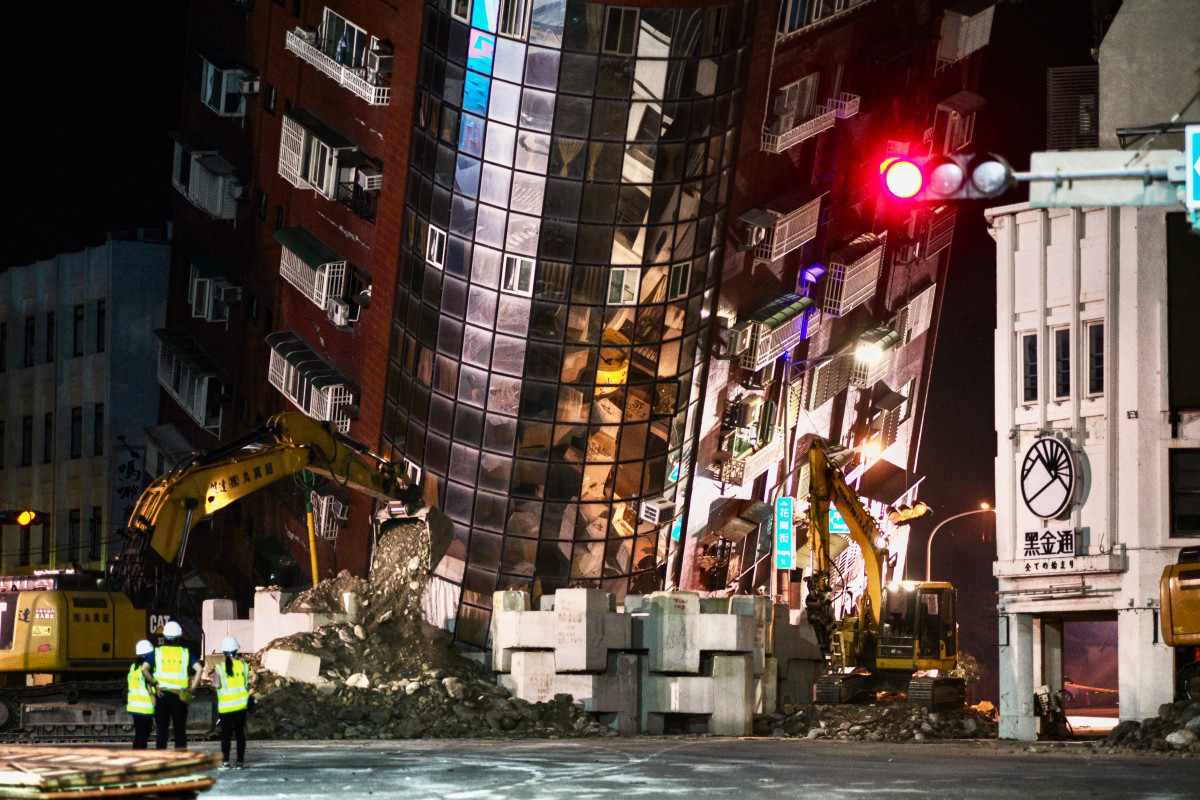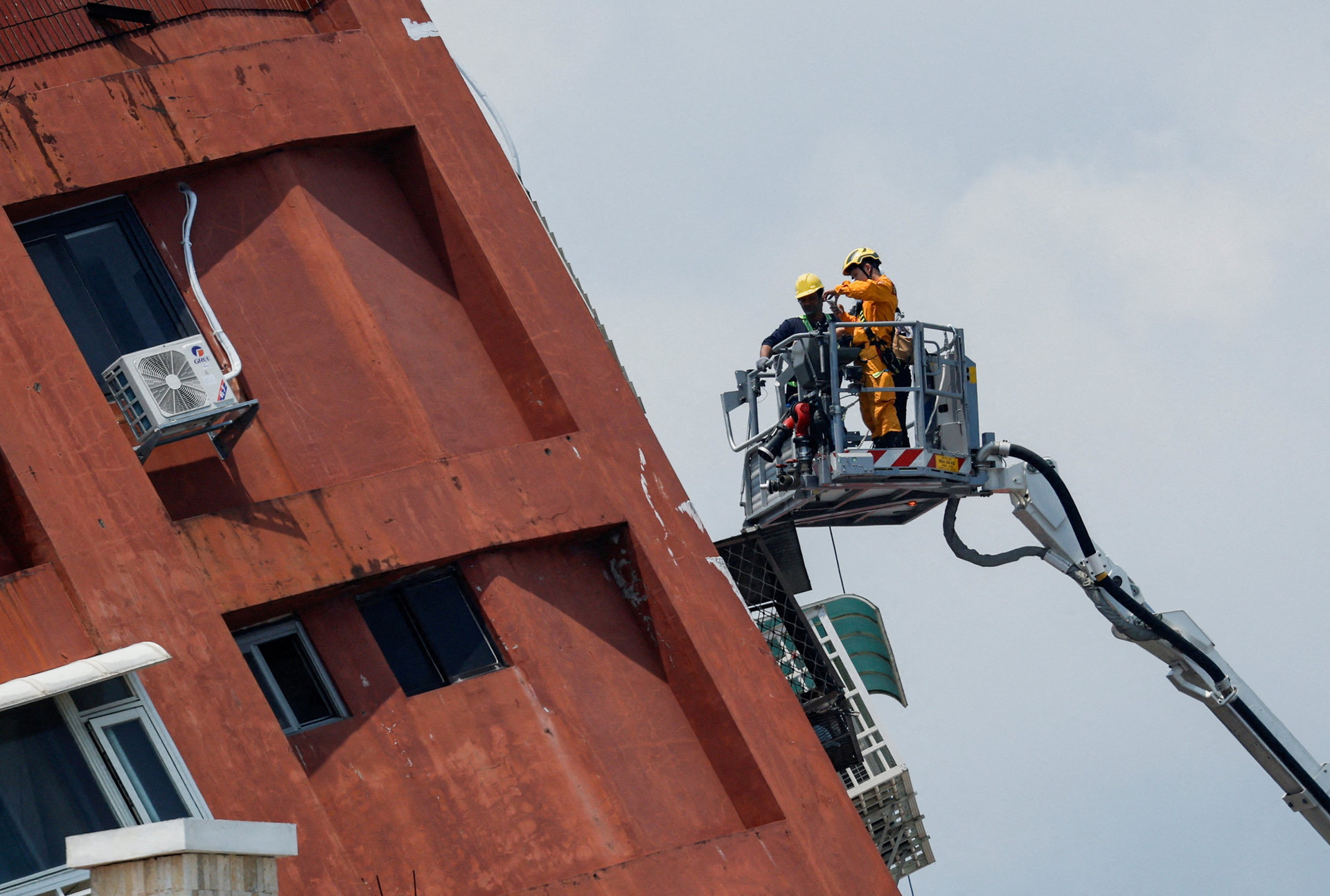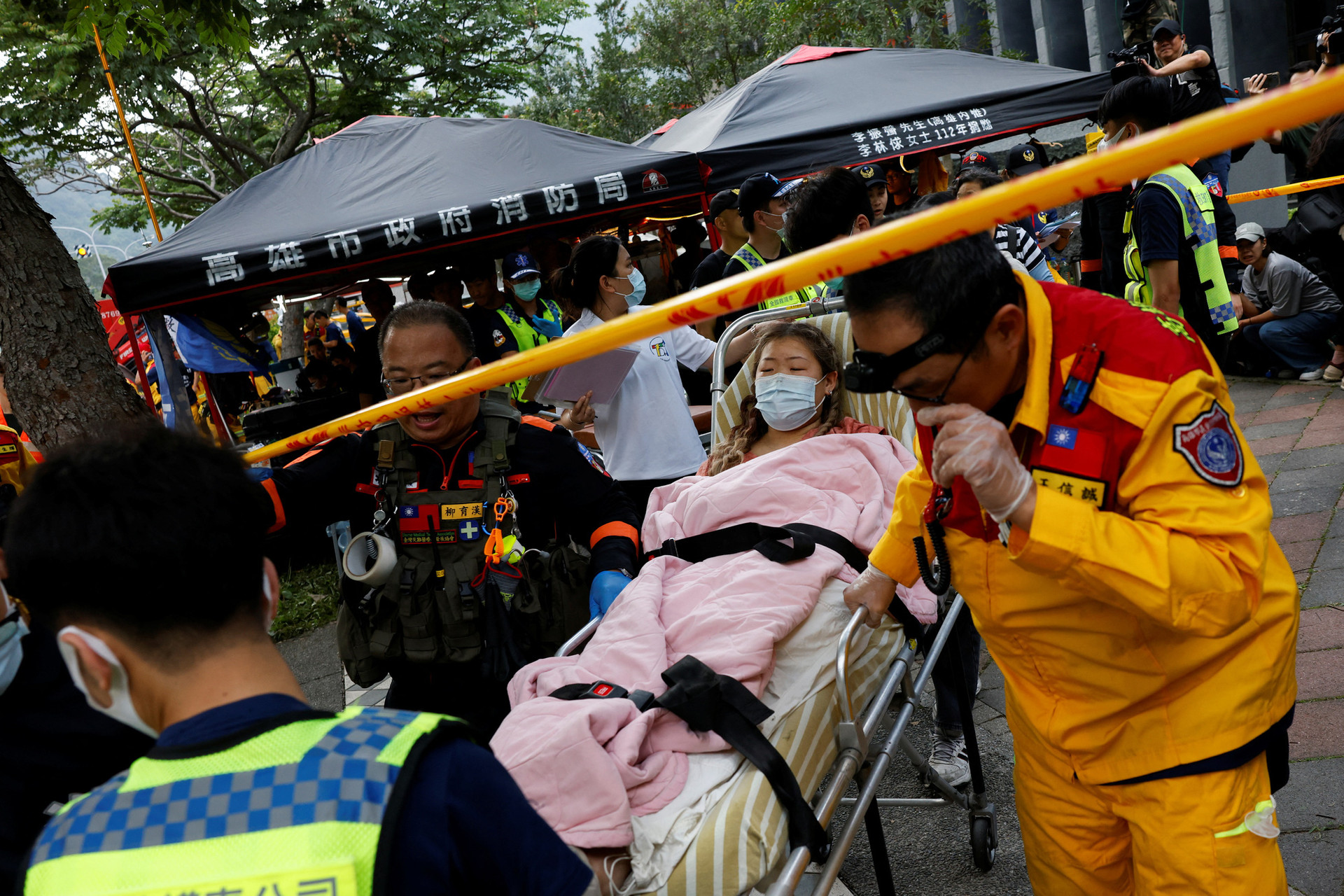The 7.7-magnitude earthquake in 1999 killed more than 2,400 people in Taiwan. Twenty-five years later, a 7.2-magnitude earthquake struck on the morning of April 3, killing nine people as of the afternoon of April 4.

As of 5 p.m. on April 4 (local time), the Taiwan Fire Department (China) in an update said that 663 people were still trapped after the earthquake occurred in the northern Hualien County. According to the agency, 9 people were confirmed dead and 1,067 people were injured.
Compared with earthquakes of similar magnitude in other areas, the 7.2-magnitude earthquake in Taiwan on the morning of April 3 only damaged a few dozen buildings in Hualien County and caused minor damage in Taipei City.
The earthquake struck during the morning rush hour, but caused only a brief disruption to normal activities. Afterwards, parents dropped off their children at school and commuters drove to their offices.
Strict building regulations
"Taiwan's earthquake preparedness is among the most advanced in the world," said Stephen Gao, a seismologist and professor at Missouri University of Science and Technology, according to the AP news agency.
Taiwan has strict building regulations, a world-class seismic network, and public education campaigns on earthquake safety, Professor Gao added.
Accordingly, the Taiwanese government is constantly reviewing the earthquake resistance level for new and existing buildings, even though this may increase construction costs.
Residents are also subsidized when they want to check the earthquake resistance of their building.
Following the devastating 7.7 magnitude Chi Chi earthquake in 1999, Taiwan has seen significant infrastructure improvements.
“There were 2,400 deaths. And this time, we can see that there are only nine deaths. We see progress,” said Larry Syu-Heng Lai, a geologist and postdoctoral fellow at the University of Washington who grew up and studied in Taiwan.
In the 2016 earthquake in Tainan City, Taiwan, a 17-story apartment building was the only building to collapse, killing dozens of people. Accordingly, five people involved in the building's construction were convicted of negligence and imprisoned.
"Our buildings are stronger. Our infrastructure is better. You could say we take this very seriously, it's part of our daily life," NBC News quoted Mr. Lai as saying.
Taipei 101 - Taiwan's tallest building - has a system on its upper floors that includes a 660-ton steel ball suspended by multiple cables. The system is designed to reduce vibrations caused by high winds and earthquakes.
A Vietnamese journalist currently working in Taiwan said there were several reasons that helped limit casualties in the strong earthquake in Taiwan, including: Hualien County is a large area with a sparse population, the earthquake occurred during the time when people were at work so not many people were at home, and there were lessons learned from the 1999 earthquake.

Lai was only 11 years old when Taiwan was hit by the Chi Chi earthquake 25 years ago. Lai said Taiwan has gradually transformed to better cope with this type of natural disaster.
Schools are beginning to have training focused on earthquake safety.
Over the next decade, the island's leaders enacted new building codes, reclassified seismic zones, and designated emergency command centers in suburban areas.
Taiwan’s sophisticated early warning system is also a key part of the island’s safety infrastructure. Based on a network of seismic instruments across the island, the system sends text messages to people’s phones when a major earthquake occurs, and immediately cuts off television broadcasts to relay the warning to residents.
Taiwan's success in dealing with earthquakes is a process and requires public education, as well as trust in the government and scientists, Lai said.
“It took us 25 years to achieve this,” Mr. Lai emphasized.
According to the director of the Taiwan Meteorological Administration's Seismological Center, the earthquake that occurred on the morning of April 3 was stronger than any other earthquake since 1999.

According to Wu Chien-fu, director of the Taiwan Weather Administration's (CWA) Seismological Center, the April 3 earthquake that shook many areas of Taiwan was stronger than any other earthquake since 1999.
The Taiwan Meteorological Administration said the intensity of the earthquake measured in Hualien was very high, with a 6+ on Taiwan's 7-point scale. A 6+ represents shaking that makes it almost impossible to stand still and can even throw people into the air.
Kuo Kai-wen, former director of the Taiwan Meteorological Administration's Seismological Center, described the 7.2-magnitude earthquake on April 3 as having the energy equivalent to about 32 atomic bombs dropped on Hiroshima, Japan, during World War II.
Meanwhile, the 1999 earthquake had the energy of 46 atomic bombs dropped on Hiroshima.